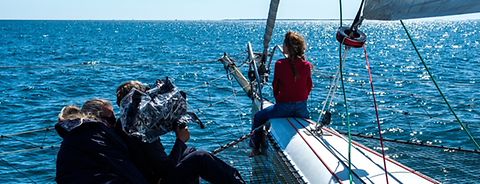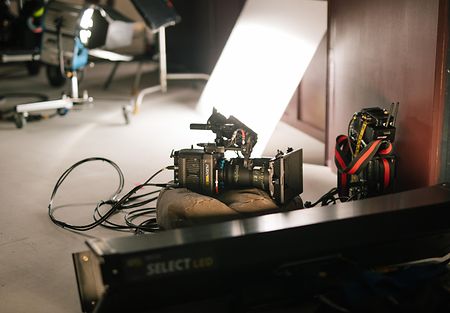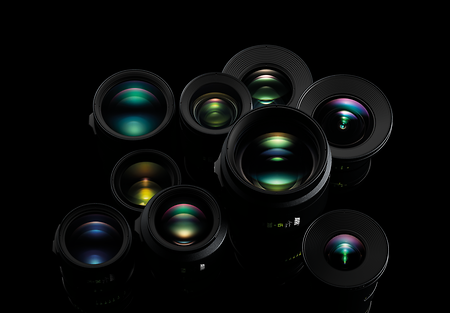As the first woman to win the transatlantic yacht race 'Route du Rhum' in 1990, Florence Arthaud was a pioneering female ocean sailor. To convey the insatiable energy of this character who overcame all obstacles to live her passion, cinematographer Pierre Milon AFC designed a brilliant, high contrast visual narrative for “Flo.” Sitting down with ARRI, he shares his experiences on this epic film shot with ALEXA Mini LF and ARRI Signature Prime lenses.
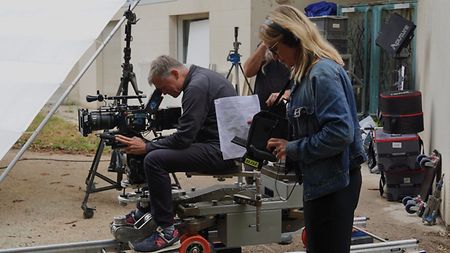
Cinematographer Pierre Milon AFC shot “Flo” with ALEXA Mini LF and Signature Prime lenses
“Flo” is director Géraldine Danon’s first feature film. How did you approach this biopic? What did the director want in terms of images?
I arrived very late on the film, only a month and a half before shooting began. That is very short notice for a feature film of this scale. I think the director was looking for a cinematographer with whom she could get along on a human level, someone who had an artistic and human connection with her. During the film’s preparation, Géraldine Danon spoke to me mainly about Florence Arthaud, whom she knew well. She insisted on the energy of this woman who was so close to her, her sunny side, the kind of absolute energy that carried her. It was these discussions that determined the type of filming I used, particularly for the sequences on land, which I shot entirely handheld. I wanted to convey the character’s energy.
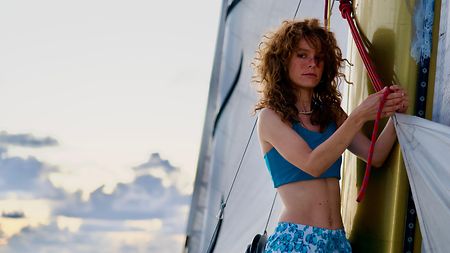
Actress Stéphane Caillard plays sailor Florence Arthaud in "Flo"
The film is mostly set in the 70s and 80s. How did you transcribe this period into the image?
Above all, Géraldine Danon wanted to portray a woman of today. Of course, we discussed the different eras in which the story is set. But I chose not to over-stylize the image. I didn’t want to do something reminiscent of the 70s and 80s. I find that every time you use a particular image treatment to signify an era, you caricature it. On “Flo,” the sets and costumes were already sufficiently reminiscent of those years. I didn’t want to add to that. Furthermore, an era is also characterized by behavior, it’s seen in the way the characters act with each other in the story. If I had made a kind of fake film for the 70s period, I think it would have done the film a disservice.
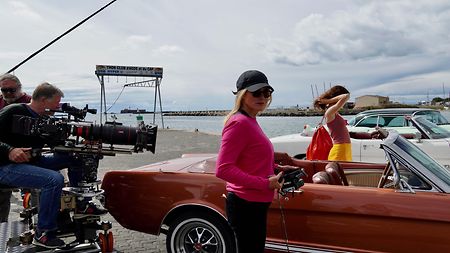
The DP didn’t particularly want to stylize the image and used the set to convey the 70s
From start to finish, “Flo” is a bright, sunny film. How did you work the image to achieve this?
I made a very simple choice of a fairly bright, high-contrast image. From the first to the last shot, the story follows the lead of Florence Arthaud, played by actress Stéphane Caillard, who really carries the film. This character always guided me, and I tried to create a picture that had the same dynamic as the sailor. And then, in Guadeloupe and South Africa, we had extraordinary natural light conditions. Even in Brittany, we were spoiled by the weather, even though I was expecting to have to battle with the elements. Everywhere we shot, we had sunlight. This benefited the film enormously.
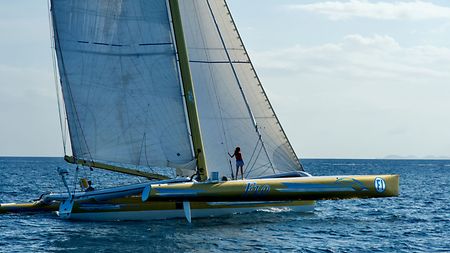
“I chose the LF for its large format. It gave me more latitude in terms of depth of field,” explains DP Pierre Milon
Why did you opt for the combination of ALEXA Mini LF and ARRI Signature Prime lenses?
I’ve always shot with ALEXA. I was unfaithful to ARRI on Robert Guédiguian’s last three films, but I very often work with this camera. On “Flo,” it was the first time I’d used the ALEXA Mini LF. It’s a beautiful tool. I have nothing but compliments to offer. I didn’t really do any comparative tests to make up my mind. I chose the LF for its large format. It gave me more latitude in terms of depth of field. In the intimate sequences, I was able to benefit from very a shallow depth of field while still being close to the character. For seascapes and landscapes, I could use the large format to give the shots more scope. Indeed, the ALEXA Mini LF was perfectly suited to a film about wide open spaces like “Flo.”
For the lenses, however, I did some comparative tests. I chose the Signature Prime series, which I combined with a Soft/FX filter. In this way, I had the precision of Signature Prime while adding softness with the filter. The result was a very dynamic, precise image, but with a softness all of its own. The large format also allowed me to be at ease with short focal lengths, particularly in the scenes inside the boat, where I worked with 25 mm and 35 mm. On “Flo,” I had to work in extremely confined spaces. Even on the deck of the boats, I was always very close to the actress, and I was able to shoot nice close-ups without distortion. This was made possible by the LF’s large format.
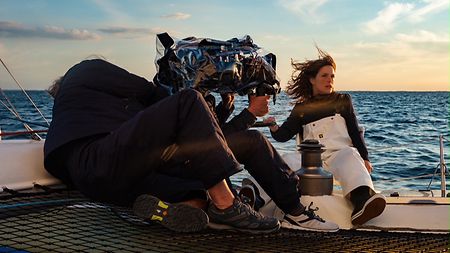
The DP shot the boat scenes handheld for an unstable image rendering but “this instability created a dynamic, very interesting movement in the story”
The scenes on the boat at sea, at full speed, are very impressive. How did you approach them?
In the end, the shots on the boat turned out to be easier to shoot than I thought. Before the actual shoot, we went out for a few sea trials with the trimaran to see how we’d get on. In the end, I found that working handheld with the ALEXA Mini LF gave me a lot of flexibility when it came to moving around the boat. The trimaran is fifteen meters wide and there are nets between the floats that I could walk on. This allowed me to shoot from very different angles, in a variety of camera positions. This type of boat is quite stable at sea, compared with a monohull. Of course, once it reaches full speed, it’s going very fast, but the movements are less pronounced than on other types of vessels. Shooting handheld, I was able to create shots that maintained a certain instability, but without endangering the image. This instability even created a dynamic, very interesting movement in the story.
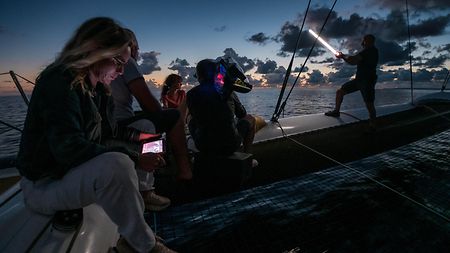
On set of "Flo": Director Géraldine Danon (left) and DP Pierre Milon (center)
How did you manage the lighting on the boat? The weather changes constantly at sea, making light adjustments almost impossible.
I didn’t have any major transition problems. On the various boats I didn’t have any additional light; it was impossible to have a gaffer with a reflector. Besides, everything moves very fast on a boat. Often, I was straddling one of the floats while shooting. We just didn’t have the time. I only added a little lighting in the interior scene, in the night cabin, but that was it. On the exteriors at sea, the only thing I could do was position the boat according to the sun. That’s basically what I had to do to get it right. It was quite complicated, because the ship moves in relation to the direction of the wind. I always had to take that into account. So, it was constantly doing gymnastics between the position of the boat, sun, and wind. I played with the natural elements. But we were very lucky with the weather. In Brittany, when we went out to sea, the fine weather lasted all day. I didn’t have to start a sequence in the sun and then suddenly have to finish it in the rain. I may regret that we didn’t have more shots with the actress facing a stormy sea, but it just didn’t happen weather-wise. The only sequences where the sea was very rough were shot with a helicopter. For the wide shots, I had a stabilizer installed on the accompanying boat, which I controlled with a joystick. The fact remains that shooting at sea is a big organizational job. When you leave in the morning, you have to sail for two hours before you're far enough away from the coast to start filming.
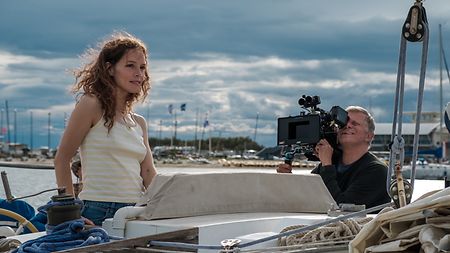
“On ‘Flo,’ it was the first time I’d used the ALEXA Mini LF. It’s a beautiful tool. I have nothing but compliments to offer,” says DP Pierre Milon
How did you expose the ALEXA Mini LF? Did you use LUTs?
In general, with me, simplicity comes first. I’m not getting into complicated image processing to achieve some kind of effect. On “Flo,” I used the ALEXA Mini LF at ISO 1280. During testing, I had seen that it was very good at this exposure level. It allowed me to be a little less defined, to have an image texture that took me out of digital. As for the rest, I’m absolutely not a LUT person, or rather, I can’t make decontextualized LUTs from studio tests. For me, the LUT is conceived after a few days of shooting, on real sets, on real exteriors, with real light. When the colorist receives the first rushes, we define a LUT that they can apply to the images. On “Flo,” after shooting the first sequences in Paris, I was able to go and look at the rushes in the lab with the colorist and the LUT we’d designed. But I don’t do pre-established LUTs.
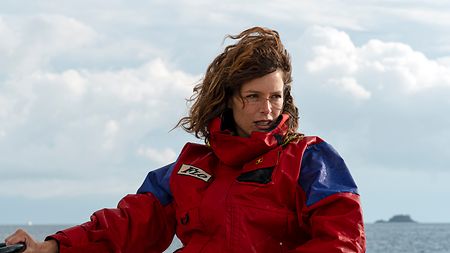
In terms of light, DP Pierre Milon positioned the boat according to the sun
Opening image: Lucien Balibar
